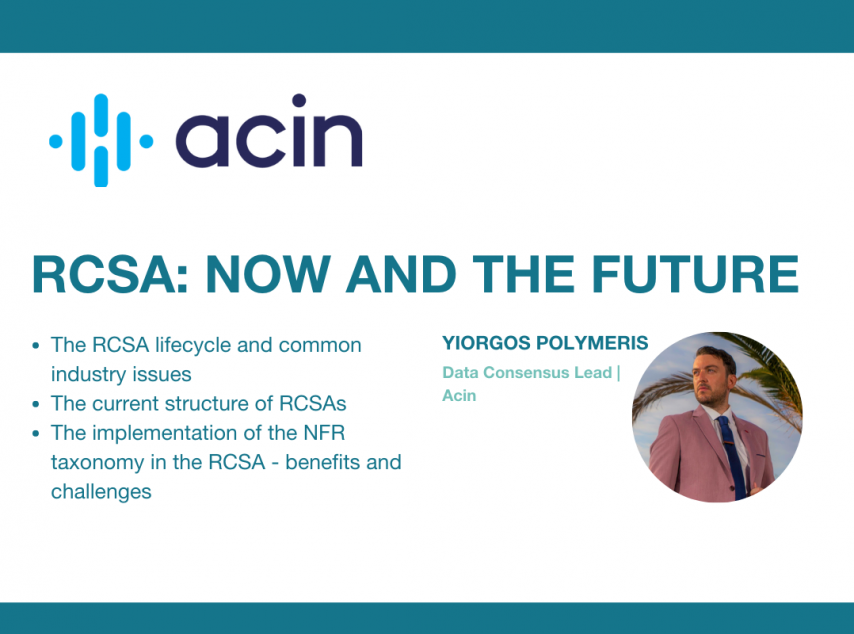
Event
Webinar: RCSA – Now and the future with Yiorgos Polymeris
Rachel King led a Masterclass & Mentor session on:
Masterclass and mentor sessions include a 20-40 minute presentation followed by a 20-40 minute open, private and intimate discussion with the audience.
Rachel King began the masterclass asking “if you had to choose one risk that, if mitigated, would prevent all other risks – what would it be?”. “How would you manage the that one core risk, today?”. She proposed that, whether your risk of choice was conduct or cyber, chances are that it will be impacted by the risk of humans – and won’t be covered in your taxonomy.
Rachel defines human risk as ‘the risk of loss due to human factors including the decisions and non-decisions, values, thoughts, feelings and behaviours of humans inside an organisation. Human risk includes the risk of opportunity loss, unrealised value, potential innovation, growth, productivity and/or profit as well.’
Rachel distinctly differentiates human risk from the current Basel reference to ‘people risk’ – which she challenges is that ‘people’ is limiting. The definition of human is more primal; more representative of human behavioural divers.
Rachel used the session to explore the main drivers behind human risk. As an example, she used ‘financial stress’ as a huge influence: financial stress, the enhanced likelihood of mental health conditions such as substance misuse and depression or domestic violence is often a symptom of, or pre-condition of, financial crimes such as fraud and embezzlement.
Rachel recognises the need to label human risk to learn to identify, prioritise its management, make sure the right processes are in place – and then mitigate it.
In the mentor session, Rachel and the audience discussed key takeaways that they could implement into their own firm’s culture. These were:
Thank you, Rachel King, for opening up this discussion. Please visit Rachel’s social site and website to learn more about Human Risk and how your company can embrace this.
Written by Klara Hansen, WiRC Coordinator and Data Insight Analyst at Acin

Rachel King
Human Risk Management is the fusion of Rachel’s work, academic studies and her personal life experience. Rachel is credentialed with (two) Masters’ degrees, qualifications in psychology, brain science and leadership and policy in mental health. Combined with almost 20 years’ experience working in global financial institutions, Rachel speaks the languages of both the business and research worlds to create and apply practical evidenced-based solutions to human risk problems. Rachel is a forward thinker and a leading authority on the human brain & behaviour. She is dedicated to sharing her knowledge with boards, CEOs and their teams, to help them meet their legal and regulatory obligations around Human Risk including Mental Health Risk while also increasing the value of their most valuable asset, their human capital. Over the years she has created a solid network of subject matter experts and collaborative relationships with organisations who are also pioneers in their fields.
Please tap the links below to learn more about Rachel King.